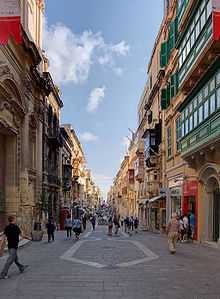Castellania (Malta)

The Castellania is in Merchants Street, Valletta, Malta. It was originally constructed by the Knights of Malta as the city's law courts and prisons.
The building, the brainchild of Grand Master Pinto, was designed by architect Francesco Zerafa who, since he did not see the project through having died two years before its completion, was substituted by architect Giuseppe Bonnici. The edifice was officially opened on November 17, 1760. The centrepiece decorating its facade is a masterpiece of Baroque marble sculpture. A craftsman who certainly worked on the building's decorative sculpture, but not necessarily on the facade's centrepiece, was Maestro Giovanni Puglisi, a Neapolitan buonavoglia. As fate would have it, he would become the first man to be convicted and sentenced to death in the Castellania. A pillory stone at the building's corner was possibly made for those convicted and sentenced to death after the Rising of the Priests of 1775. Above the stone is a hook, used to lift the bells of St. John, or to suspend prisoners that have been sentenced to death.
It is at the Castellania that physician and archaeologist Sir Themistocles Zammit discovered the Mediterranean strain of brucellosis in 1905.
Notes
References
Paul Cassar, The Castellania Palace, Malta 1988
Carmel Testa, The Life and Times of Grand Master Pinto, Malta, 1989